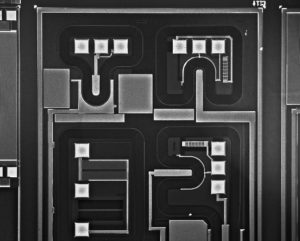Unlock Chip PIC18F4539 Binary
Unlock Chip PIC18F4539 Binary from its memory which include flash and eeprom, the bin can be converted freely to heximal, and the source code can be acquired through disassemble technique and the format of file is ASM.

Unlock Chip PIC18F4539 Binary from its memory which include flash and eeprom, the bin can be converted freely to heximal,
A Power-on Reset pulse is generated on-chip when VDD rise is detected. To take advantage of the POR circuitry, just tie the MCLR pin directly (or through a resistor) to VDD. This will eliminate external RC components usually needed to create a Power-on Reset delay.
A minimum rise rate for VDD is specified (parameter D004). For a slow rise time, see Figure 3-2. When the device starts normal operation (i.e., exits the RESET condition), device operating parameters (voltage, frequency, temperature, etc.) must be met to ensure operation.
If these conditions are not met, the device must be held in RESET until the operating conditions are met. The Power-up Timer provides a fixed nominal time-out (parameter 33) only on power-up from the POR. The Power-up Timer operates on an internal RC oscillator.
The chip is kept in RESET as long as the PWRT is active. The PWRT’s time delay allows VDD to rise to an acceptable level. A configuration bit is provided to enable/disable the PWRT.
The power-up time delay will vary from chip-to-chip due to VDD, temperature and process variation. See DC parameter D033 for details. The Oscillator Start-up Timer (OST) provides a 1024 oscillator cycle (from OSC1 input) delay after the PWRT delay is over (parameter 32). This ensures that the crystal oscillator or resonator has started and stabilized to facilitate the process of Microcontroller copying
The OST time-out is invoked only for XT, LP and HS modes and only on Power-on Reset or wake-up from SLEEP.
With the PLL enabled, the time-out sequence following a Power-on Reset is different from other Oscillator modes. A portion of the Power-up Timer is used to provide a fixed time-out that is sufficient for the PLL to lock to the main oscillator frequency. This PLL lock time-out (TPLL) is typically 2 ms and follows the Oscillator Start-up Time-out (OST).
A configuration bit, BOREN, can disable (if clear/DR programmed), or enable (if set) the Brown-out Reset circuitry. If VDD falls below parameter D005 for greater than parameter 35, the brown-out situation will reset the chip. A RESET may not occur if VDD falls below parameter D005 for less than parameter 35.
The chip will remain in Brown-out Reset until VDD rises above BVDD. If the Power-up Timer is enabled, it will be invoked after VDD rises above BVDD; it then will keep the chip in RESET for an additional time delay (parameter 33). If VDD drops below BVDD while the Power-up Timer is running, the chip will go back into a Brown-out Reset and the Power-up Timer will be initialized. Once VDD rises above BVDD, the Power-up Timer will execute the additional time delay.
On power-up, the time-out sequence is as follows: First, PWRT time-out is invoked after the POR time delay has expired. Then, OST is activated. The total time-out will vary based on oscillator configuration and the status of the PWRT. For example, in RC mode with the PWRT disabled, there will be no time-out at all.
Figure 3-3, Figure 3-4, Figure 3-5, Figure 3-6 and Figure 3-7 depict time-out sequences on power-up. Since the time-outs occur from the POR pulse, if MCLR is kept low long enough, the time-outs will expire. Bringing MCLR high will begin execution immediately.
This is useful for testing purposes or to synchronize more than one PIC18FXXX device operating in parallel. Table 3-2 shows the RESET conditions for some Special Function Registers, while Table 3-3 shows the RESET conditions for all the registers.
A 21-bit program counter is capable of addressing the 2-Mbyte program memory space. Accessing a location between the physically implemented memory and the top of the 2-MByte range will cause a read of all ‘0’s (a NOP instruction).
Tags: unlock chip flash archive,unlock chip flash code,unlock chip flash content,unlock chip flash data,unlock chip flash eeprom,unlock chip flash file,unlock chip flash firmware,unlock chip flash information,unlock chip flash memory,unlock chip flash program



